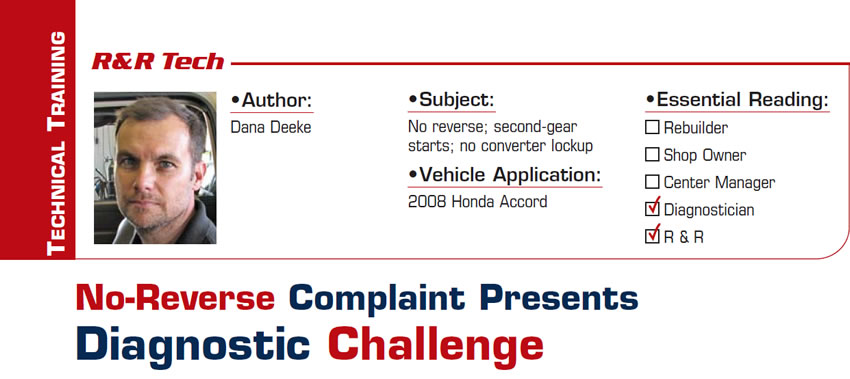Looking deeper: Telling apart electrical issues and parts issues
We see such a variety of transmission problems these days, and all the electronics involved today certainly have added a whole new crop of potential issues. Even though a significant part of our diagnostic process is geared towards electrical issues, there are still times when the problem is simple and not related to electronics at

How do you know if a car is lying to you?
Sometimes a vehicle comes into the shop with a code in memory and a concern, and it is quick and easy to follow the code and find the source of the problem. But how do you know if a car is lying to you, trying to throw you off the trail with some false information?
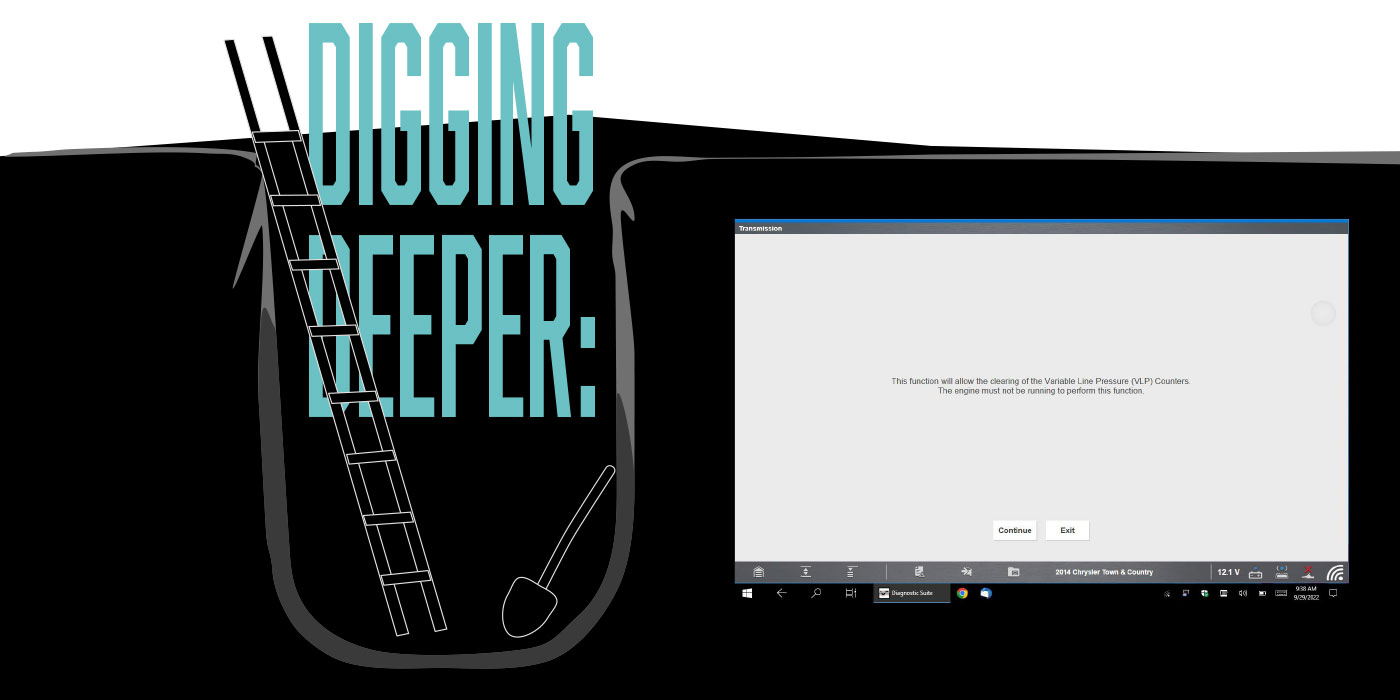
Hyundai CV axle / PTU: A fresh set of eyes
One of the things I have always enjoyed about this job is when we are able to help another shop out with a problem that they have been fighting for a while and just have not been able to find the source of the problem. The following story is one of those situations, while it
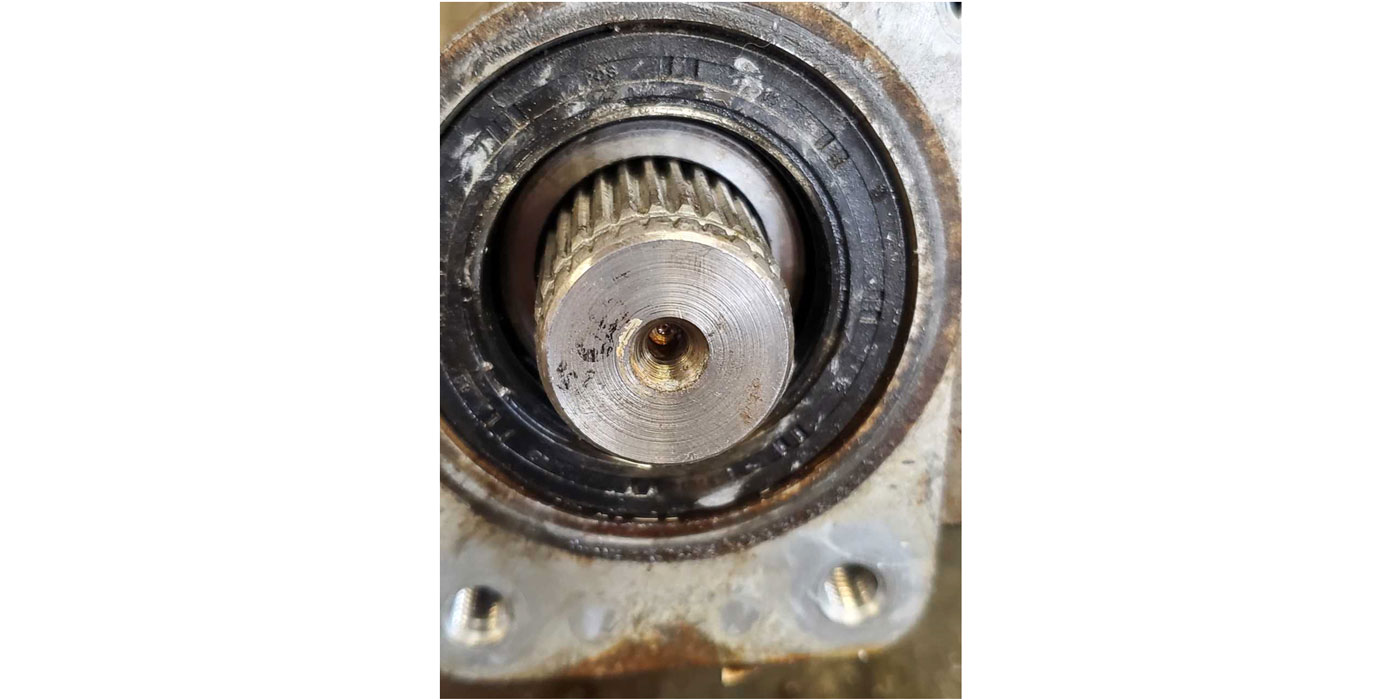
That’s a New One
R&R Tech
Dana Deeke reviews a Trailblazer with a leaky transmission.

Multiple Causes for P0562
A customer brought in a 2010 Dodge Journey AWD with the high-output 3.5-liter V6 engine and the 62TE automatic transmission. With a little more than 83,000 miles on the odometer, the complaint was for no upshifts and stuck in 3rd-gear failsafe mode. This concern had started out as an intermittent issue but now had become more regular.
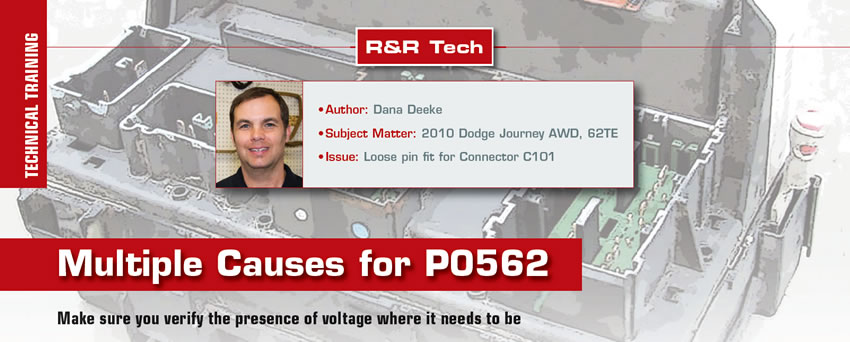
Verify What the Scan Tool is Telling You
The subject vehicle is a 1999 Chevrolet Tahoe. It came to us on a wrecker, as the customer was not comfortable driving it to us. The concern was stated as harsh shifts and a check engine light on. The vehicle was brought into the shop and the fluid level and condition were checked. The fluid level was full but the fluid had a strong burnt odor and was discolored. A quick scan of the computer revealed code P1870, “transmission component slipping.”

Accelerating in 4X4 Comes with a Bang
A while back I had a truck that came into our shop for a noise concern. The customer stated that he heard a loud clunk or repeated popping noise when he would accelerate with the truck in automatic 4×4 mode, as well as in 4×4 high and 4×4 low. He also stated that he didn’t notice the noise under light acceleration in these modes, and that the noise was not present when he was in 2WD under any type of acceleration. The truck was a 2009 K1500 Silverado with a little over 83,000 miles on it. Upon reading the description, it sure seemed like I had a transfer case problem to look into.
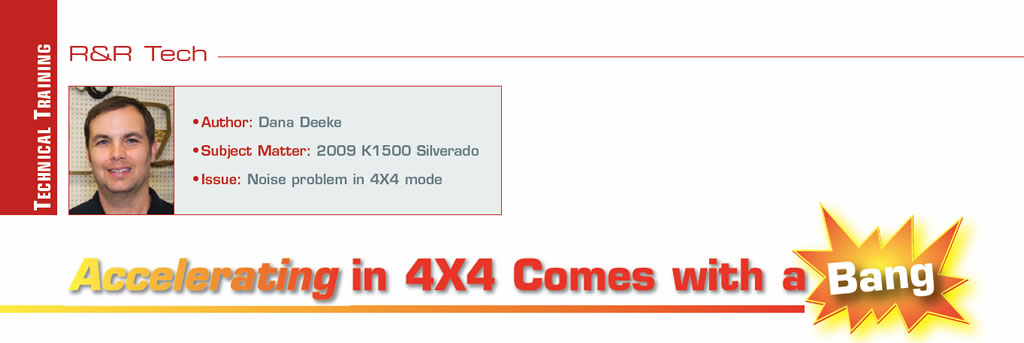
As a Tech, You Must Detect
Occasionally you will have a vehicle come into your shop that takes you down a different path than what you might have expected. The following account tells the story of one of the times that it happened to me. The star of this show is a 2006 Chevrolet Silverado 2500 4×4, equipped with a Duramax diesel engine and an Allison 1000 transmission.
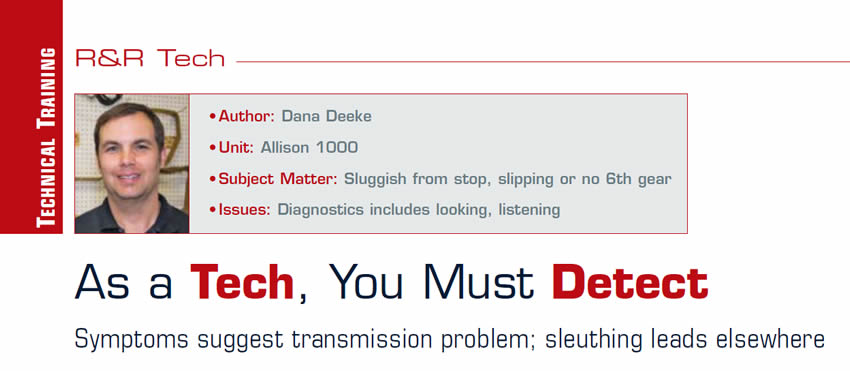
Sometimes Lucky is Better than Good
A mid-’90s Dodge Caravan came into the shop with the complaint of a rough noise/feel when driven above 45-50 mph. The van had been into a couple of other local shops in an attempt to find the noise with no success, and the customer was getting frustrated.
As normal, I started with a road test to see whether I could duplicate the customer complaint. Sure enough, upon reaching 45 miles per hour the van started to make a low growling sound and you could feel a little vibration through the steering wheel. It was time to get the van inside and do a visual inspection.
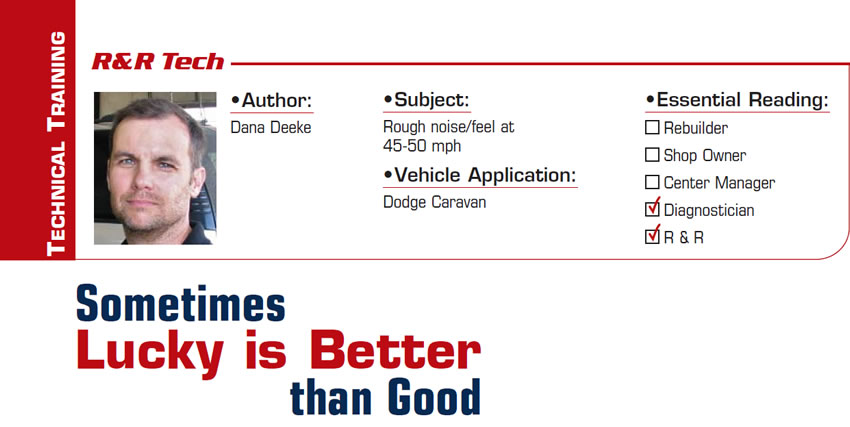
No-Reverse Complaint Presents Diagnostic Challenge
As I read about the operating strategy of the solenoids, I learned that the PCM commands solenoids A, B and E (Figure 1) when reverse gear is selected. Now I could see that solenoid E has an important role in reverse-gear engagement, and I was starting to think I had cleared at least one hurdle. If solenoid E is inoperable, oil will not be directed to engage reverse. I was now certain that I had found a common link to the problems that the owner experienced.
